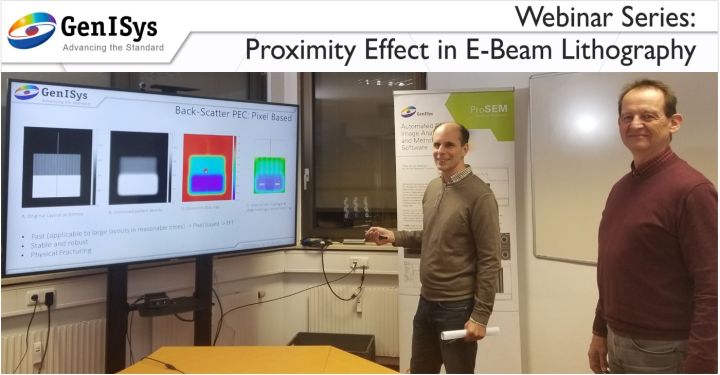Part 2 – Dose PEC Algorithm and Parameter
Speaker:
Ulrich Hofmann, Nikola Belic - GenISys GmbH
Takeaways:
- Why PEC?
- Dose PEC with Edge Equalization Algorithm (“Optimum Contrast”)
- Dose range, accuracy, fracturing
- Long-, Mid-, Short range Correction
- What is the “Base Dose” & “Effective Short-Range Blur”
- Strength & Weaknesses of “Optimum Contrast”, “Uniform Clearing” and “Mixed Mode”
Summary of the Webinar:
- Always use PEC
- Avoids dose matrices by adjusting all layouts (small - large, dense – coarse, …) to one specific base dose
- Improves litho-quality and minimizes beam-on time (improves throughput) by adjusting local doses to optimum, avoiding overdosing
- Opens / enlarges process window (more stable process)
- “Edge-Equalization” is a stable and robust PEC method
- Adjusts all layout edges to the same absorbed dose (dose-to-clear)
- “Iso-focal” (not sensitive to blur change) provides best CD control over field position (corner / edges), blur change over time
- Proximity influence ranges
- Pixel based algorithm for long range is fast and stable for long-range (backscatter)
- For short-range local (shape based) algorithm couple with DRC to determine the shapes requiring SR correction is a better choice
- Mid-range is included into short- or/and long-range if feasible. For high midrange energies a separate pixel-based correction with a finer grid is performed.
- The basic PEC parameters are pretty simple
- Point Spread Function (PSF) from Monte Carlo simulation
- Based dose can be determined by exposing dose matrix of a PEC’ed typical pattern
- Effective Blur can be estimated from dose variation of isolated line around dose-to-size
- Absorbed energy and resist contour at threshold can be simulated by convolution of the layout with the PSF
- For low contrast resists on dense material the “Mixed-Mode” between Optimum Contrast (Edge-Equalization) and Uniform clearing (Surface-Equalization) may be an alternative

